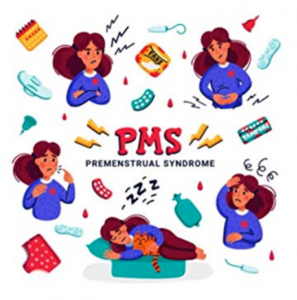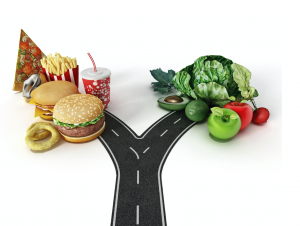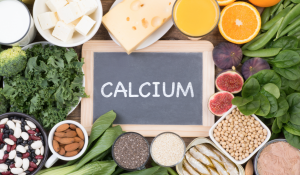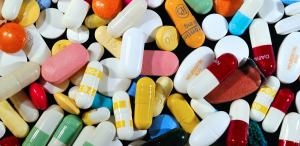PMS and How to Curb Symptoms
What is PMS?
Many women feel physical or mood changes during the days before menstruation. When these symptoms happen month after month, and they affect a woman’s normal life, they are known as premenstrual syndrome (PMS).
What are the Symptoms?
Emotional symptoms include
-
depression
-
angry outbursts
-
irritability
-
crying spells
-
anxiety
-
confusion
-
social withdrawal
-
poor concentration
-
insomnia
-
increased nap taking
-
changes in sexual desire
Physical symptoms include
-
thirst and appetite changes (food cravings)
-
breast tenderness
-
bloating and weight gain
-
headache
-
swelling of the hands or feet
-
aches and pains
-
fatigue
-
skin problems
-
gastrointestinal symptoms
-
abdominal pain
Exercise
For many women, regular aerobic exercise lessens PMS symptoms. It may reduce fatigue and depression. Aerobic exercise, which includes brisk walking, running, cycling, and swimming, increases your heart rate and lung function. Exercise regularly, not just during the days that you have symptoms. A good goal is at least 30 minutes of exercise most days of the week.
Dietary Changes
Simple changes in your diet may help relieve the symptoms of PMS:
-
Eat a diet rich in complex carbohydrates. A complex carbohydrate-rich diet may reduce mood symptoms and food cravings. Complex carbohydrates are found in foods made with whole grains, like whole wheat bread, pasta, and cereals. Other examples are barley, brown rice, beans, and lentils.
-
Add calcium-rich foods, like yogurt and leafy green vegetables, to your diet.
-
Reduce your intake of fat, salt, and sugar.
-
Avoid caffeine and alcohol.
-
Change your eating schedule. Eat six small meals a day rather than three large ones, or eat slightly less at your three meals and add three light snacks. Keeping your blood sugar level stable will help with symptoms.
Dietary Supplements
Taking 1,200 milligrams (mg) of calcium a day can help reduce the physical and mood symptoms that are part of PMS. Taking magnesium supplements may help reduce water retention (“bloating”), breast tenderness, and mood symptoms. One study has shown that vitamin E may help reduce symptoms of PMS.
There are many products that are advertised to help with PMS. Most of these products have either not been tested or have not been proved to be effective. It is important to talk with your ob-gyn before taking any PMS product or supplement. Taking excess amounts of them or taking them with some medications may be harmful.
Medications
Drugs that prevent ovulation, such as hormonal birth control methods, may lessen physical symptoms. But not all may relieve the mood symptoms of PMS. It may be necessary to try more than one of these medications before finding one that works.
Antidepressants can be helpful in treating PMS in some women. These drugs can help lessen mood symptoms. They can be used 2 weeks before the onset of symptoms or throughout the menstrual cycle. There are many kinds of antidepressants. If one does not work for you, your ob-gyn may prescribe another.
If anxiety is a major PMS symptom for you, an antianxiety drug can be tried if other treatments do not seem to help. Antianxiety drugs are taken as needed when you have symptoms.
Nonsteroidal anti-inflammatory drugs (NSAIDs), such as ibuprofen, can help reduce pain. Talk with your ob-gyn before taking NSAIDs. Long-term use of NSAIDs may cause stomach bleeding or ulcers.
Diuretics (“water pills”) are drugs that help reduce fluid buildup. Your ob-gyn can prescribe a diuretic if water retention is a major symptom for you. Tell your ob-gyn what other drugs you are taking, especially NSAIDs. Using NSAIDs and diuretics at the same time may cause kidney problems.
“Premenstrual Syndrome (PMS).” ACOG, www.acog.org/womens-health/faqs/premenstrual-syndrome.
Join Our Community
Archives
- January 2023
- December 2022
- September 2022
- August 2022
- June 2022
- May 2022
- April 2022
- March 2022
- February 2022
- January 2022
- December 2021
- November 2021
- October 2021
- September 2021
- August 2021
- July 2021
- June 2021
- May 2021
- March 2021
- September 2020
- August 2020
- July 2020
- June 2020
- May 2020
- April 2020
- March 2020
- February 2020
Subscribe

Sign up to receive FREE toolkit
From Dr. Hyman, #1 NY Times & Amazon Author
We never spam or sell your e-mail








Follow Our Every Move